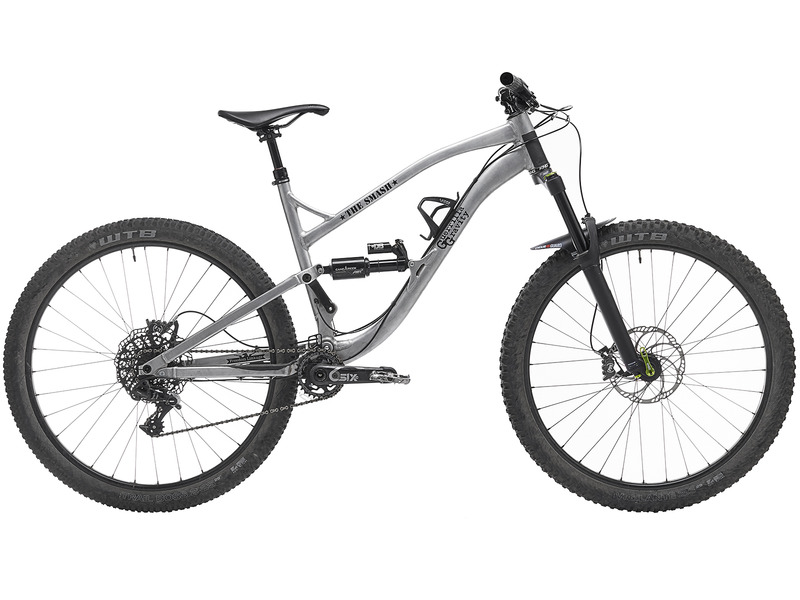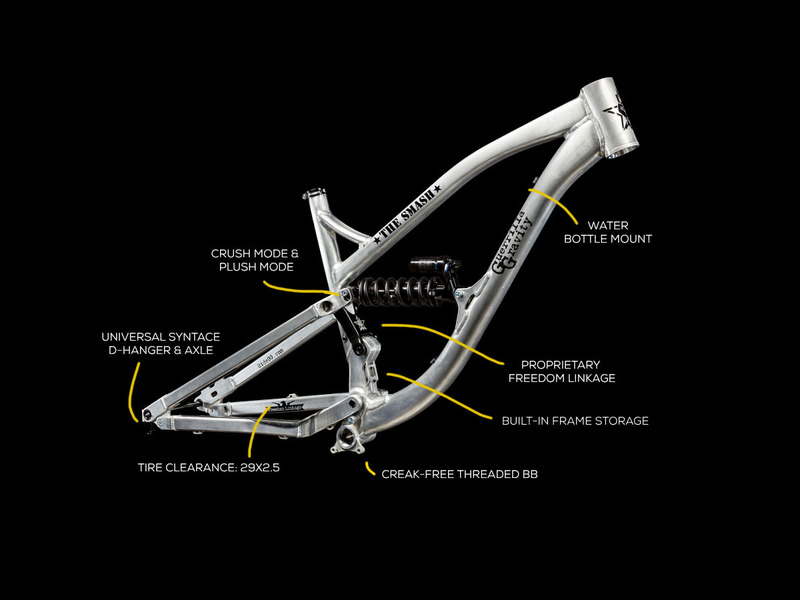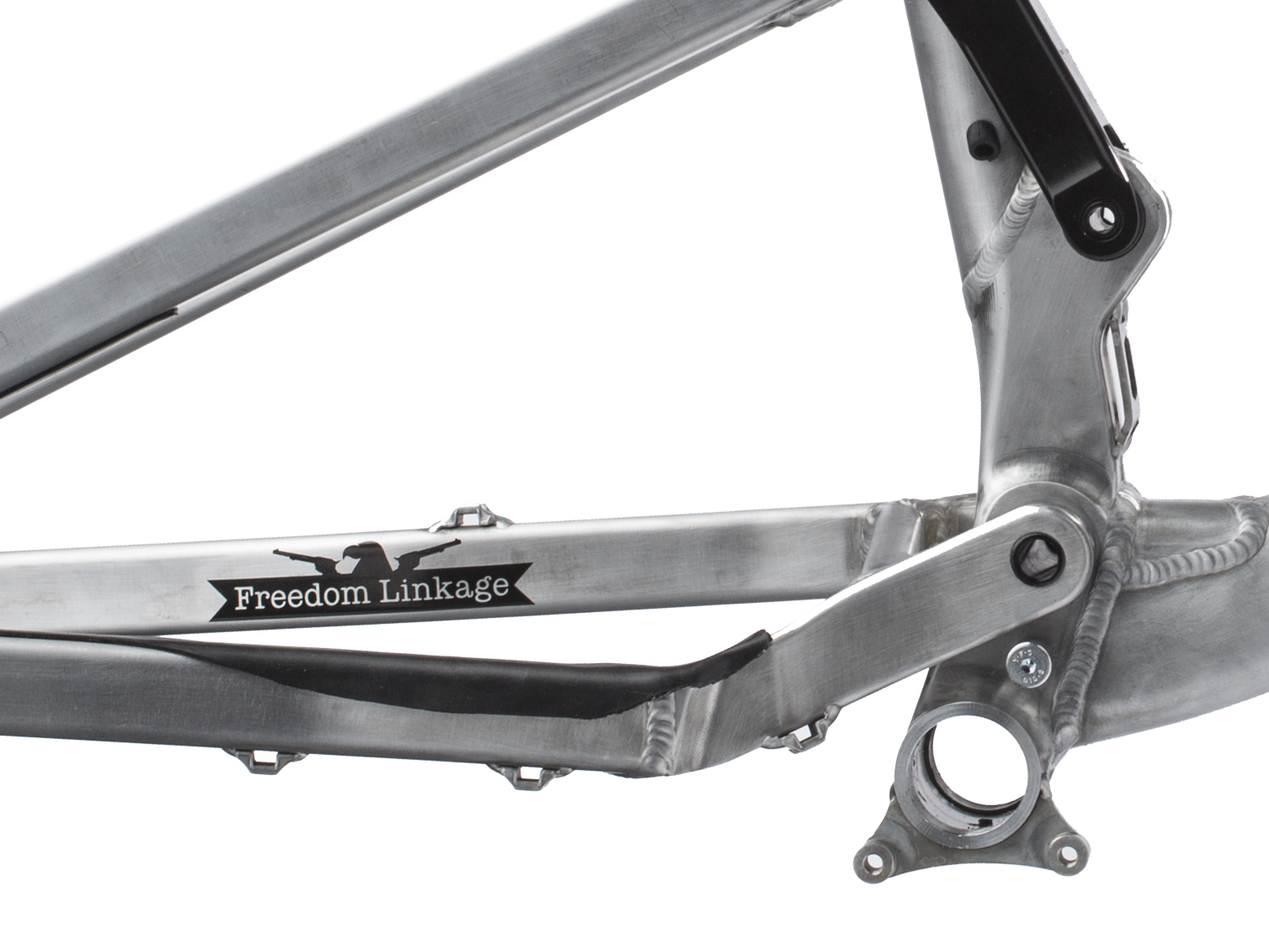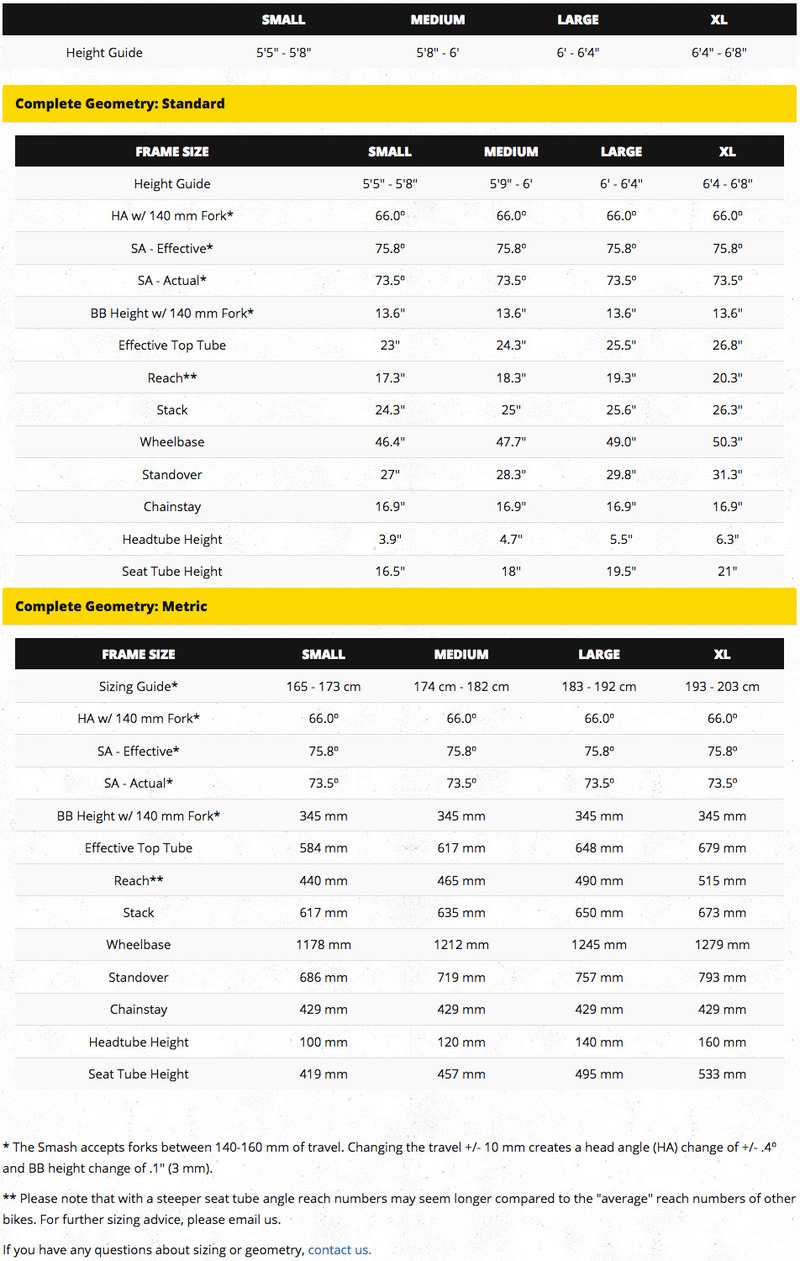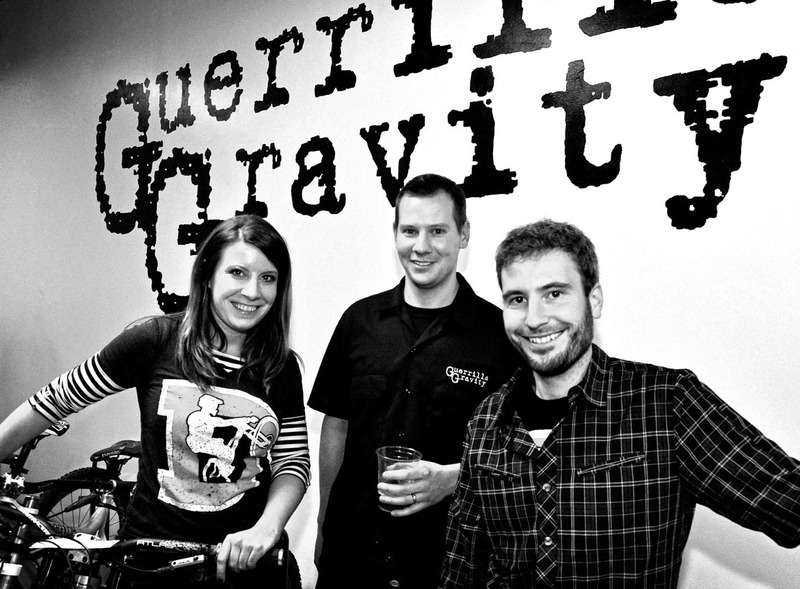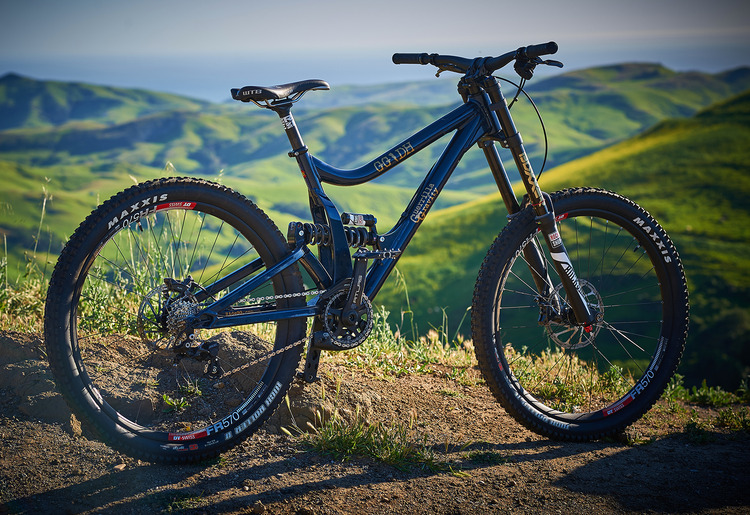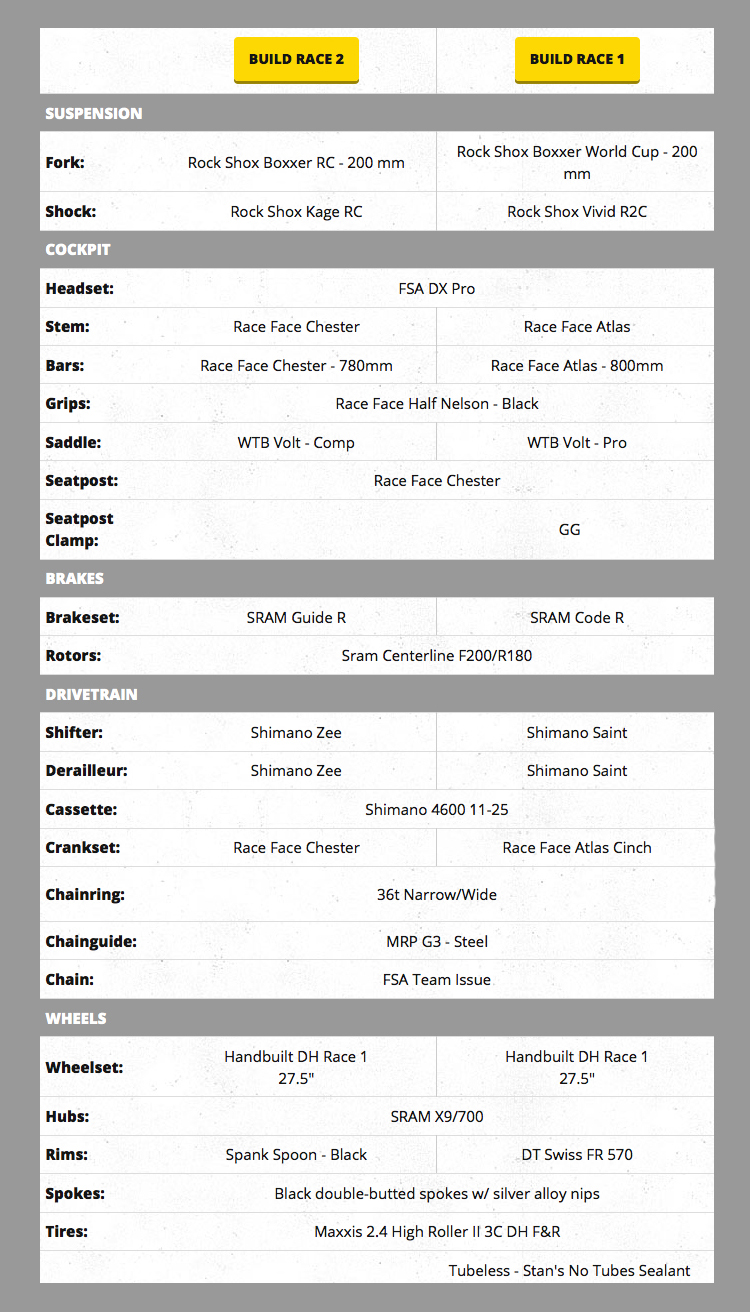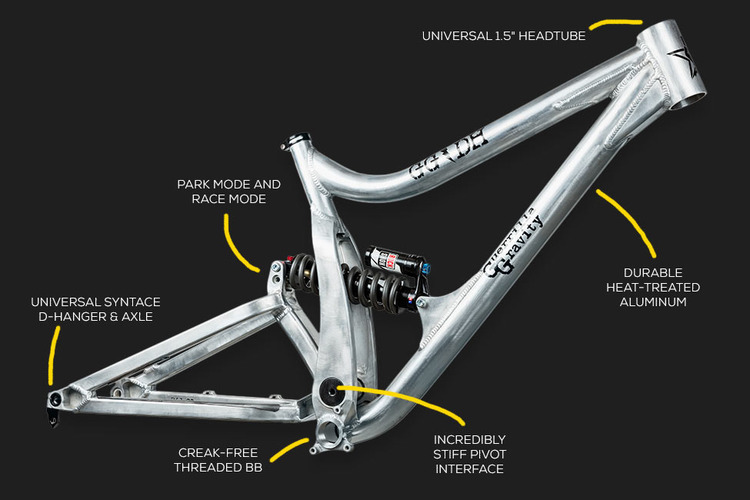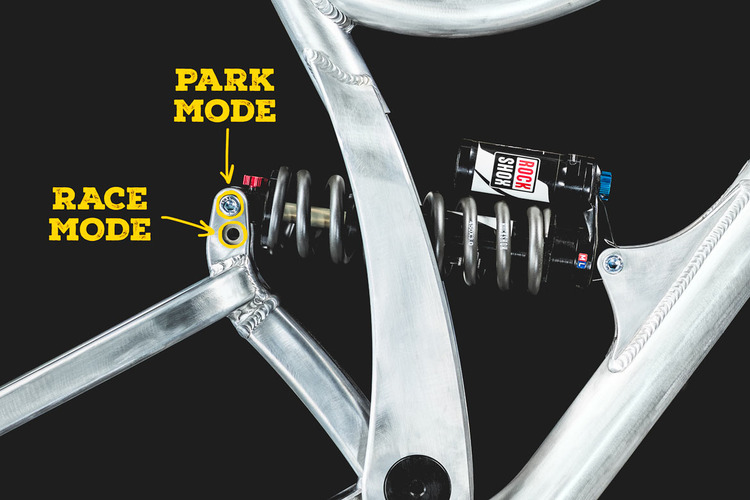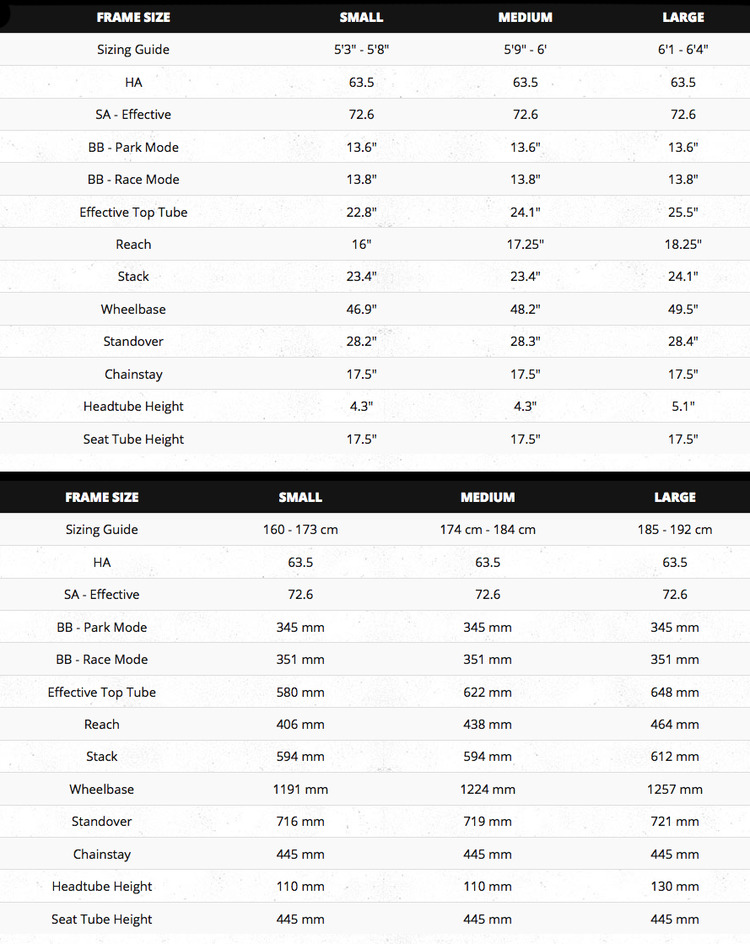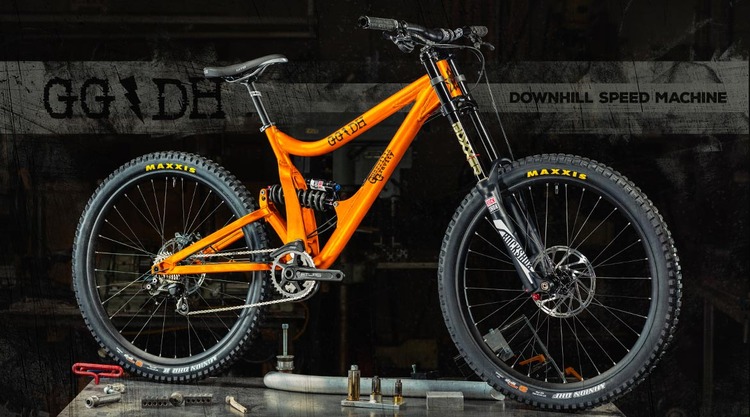Guerrilla Gravity The Smash Review
 Friday, August 18, 2017 at 6:54AM
Friday, August 18, 2017 at 6:54AM  Permalink
Permalink Guerrilla Gravity is a small mountain bike company located in Denver Colorado. They were sick of frame prices shooting through the roof while production moved overseas with little, if any, performance increase from year to year. All this while many bike companies grew in size and became more distant from their customers and what they really wanted in geometry and suspension designs. Over the past three years the folks at Guerrilla Gravity have added four more bikes to their stable. We are testing the longer travel 29r called The Smash; they are Strummer fans!
"Surface-To-Surface Missle
The punk rock spirit of Joe Strummer lives on in The Smash, inspiring riders to assail anything in their path. The combination of GG-style geometry and dialed suspension platform creates a 29er you can take on anything from epic big mountain days, to days in the bike park, to your rock-strewn after-work lap. Like all GG bikes, The Smash was designed with versatility in mind. Riders can choose between Crush Mode and Plush Mode to dial in the suspension platform that’s ideal for their local terrain. Crush Mode is more poppy and supportive, while Plush Mode is smoother in the rough--turning rock gardens into a fine velour carpet. Further dial in your ride by choosing an air or coil rear shock. We scrutinized the suspension feel compared to the Trail Pistol and Megatrail, making minute changes that optimize The Smash for its rider. It is softer off the top and through the mid-stroke, yet has more bottom out protection towards the end of its stroke. This creates a platform that is ready for smashing rocks and goin’ fast--up and down.
 Guerrilla Gravity The Smash Frame
Guerrilla Gravity The Smash Frame
Freedom Linkage
We used our background in racecar engineering to create the Freedom Linkage, a versatile platform that allows you to dial in your ride characteristics based on local terrain and rider preferences via shock tunes. It also utilizes our approach to design that focuses on a high level of refinement to eliminate unnecessary complication. This creates a platform that's made for goin' fast, yet is easy to maintain and built to last. Plus, it's built right here in our shop. Those are pure American welds (f* yeah!)!"
GG The Smash Features
- 140 mm travel
- Crush Mode & Plush Mode
-
- Crush Mode: strong mid-stroke support for flow trails and all-day adventures
- Plush Mode: softer top stroke for smashing rocks and mega-traction
- Freedom Linkage using proprietary Horst Link implementation
- Steeper seat tube angle maintains consistent geo as the saddle is raised and lowered, improves climbing efficency
- NUTS (Necessities Under the Saddle) Bracket keeps your flat changing essentials easily accessible (and lightens your load)
- Bottle mount in front triangle
- 6.6 lbs. (2,995g) frame with hardware (size Medium)
The Smash Specs
- 230x57.5 metric shock
- 30.9 mm seatpost with stealth dropper routing
- 49mm headtube, fits tapered steerer tubes
- ISCG05 chainguide mount
- Threaded 73mm BSA threaded BB shell (greatly reduces creaking)
- 55mm chainline
- ISO brake caliper mount
- 12x148 rear axle, offset 3mm to the driveside for optimal chainline and clearance
- Universal Syntace axle and derailleur hanger
- Max fork travel: 160 mm
- Max tire size: 29 x 2.5
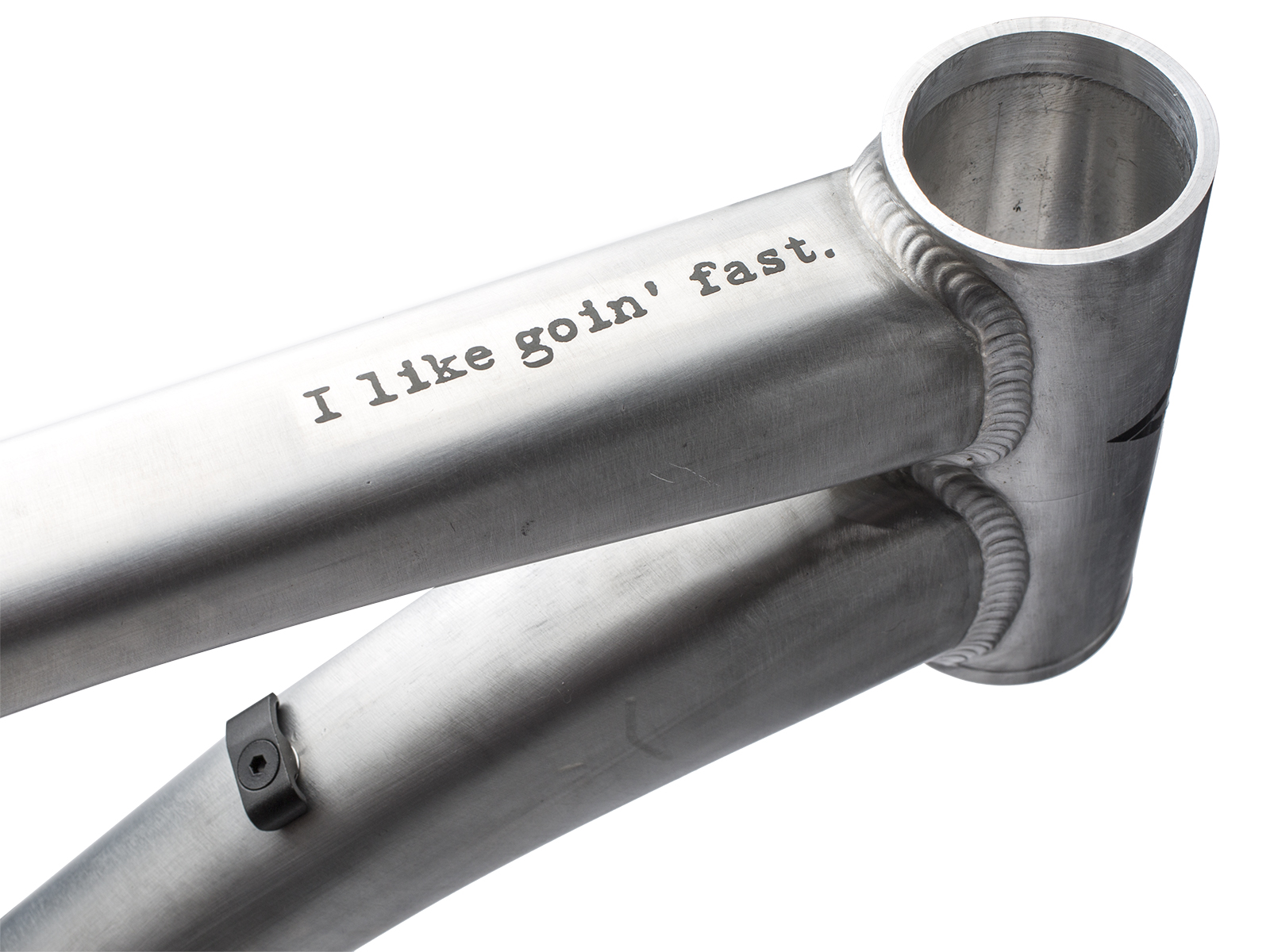 GG The Smash Headtube
GG The Smash Headtube
The Smash Geometry
Long Geometry Benefits
- Security in steep areas
The front axle is more advanced than in a conventional geometry making it almost impossible to go over the bars in steep sections. It feels more secure and confident due to a slacker angle perception.
- Confidence at high speed
The longer wheelbase makes the bike much more stable over any terrain.
- Direct steering
The really short 35 mm, 40 mm or 45 mm stems mean much less handlebar movement to get the same front wheel angle, thus improving steering precision and making the bike extremely reactive.
- Uphill precision
The front wheel keeps the contact on the ground avoiding wheelies due the longer front-center length.
- Stability on rough sections
The FG defends a new weight balance between front and rear wheels making possible to load the front wheel a lot more than with a classic geometry. This possibility changes your handling as it allows for more grip in cornering and better control."
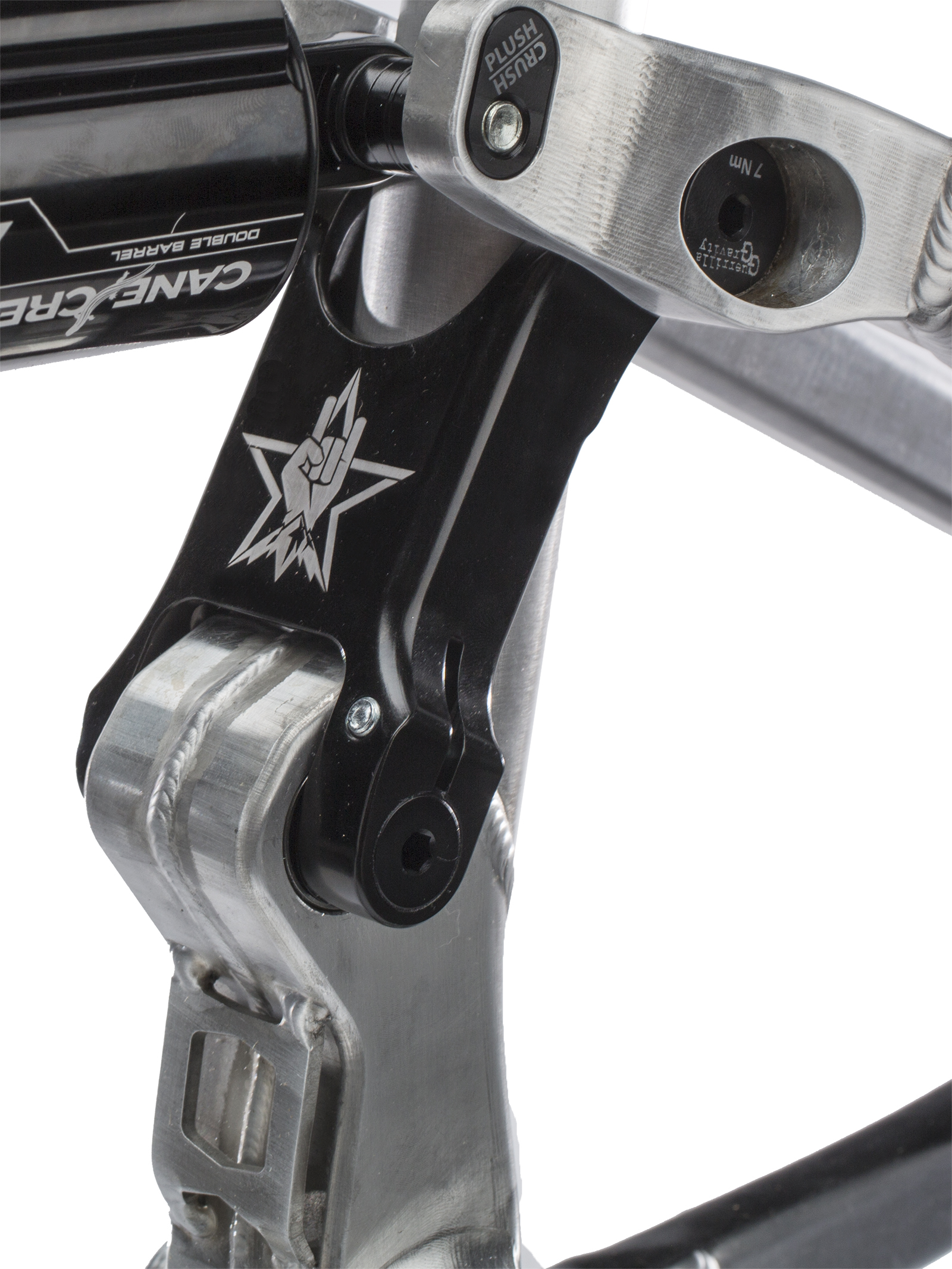 GG The Smash Plush-Crush
GG The Smash Plush-Crush
We once again ordered a size Large. The Megatrail we tested a few years back fit very well and it had similar reach numbers to the current Smash. The Smash has 29" wheels so it would be a bit taller than the Megatrail. Being six feet tall and with the reach numbers of the frame we once again opted for a 35mm stem. There where no issues putting the bikes together. Everything went together easily and having a threaded BB is the way all bikes should be. After 4 months of riding not a single noise! Also of note is the 1.5 head tube this can be somewhat limiting on headset options. We ran with a Chris King Inset5 Tapered 49mm Headset. We opted to run a more aggressive build on the bike and it's total weight was 32.3 lbs. See the build below.
- Guerrilla Gravity The Smash (LG)
- DVO Diamond 160mm (110 Boost)
- Chris King InSet5 (49mm)
- Race Face SixC Cranks 30 (170mm)
- Race Face Atlas Stem (35mm)
- Race Face SixC Bars 35mm (20mm)
- Fabric Scoop Shallow Elite
- Magura MT7 Brakes With HC3 Levers (200mm Rotors F/R)
- Hope Pro 4 Rear (12mm by 148mm)
- Hope Pro Front 15mm (110 Boost)
- Stan's No Tubes Flow MK3 29"
- 9point8 Fall Line Dropper Post (200mm)
- WTB Vigilante Front (2.3)
- WTB Breakout Rear (2.25)
- SRAM GX Eagle 12 SPD Rear Derailleur
- SRAM GX Eagle 12spd Shifter
- SRAM XG GX 10-50 Cassette
Guerrilla Gravity designed the 140mm Smash with the gravity rider in mind. The large we tested has a 1245mm wheelbase and with our 160mm DVO fork out front it is closing in on a 65 degree HA. Longer bikes like this give riders a larger margin of error. When shifting your weight around you will notice that you have to go further towards the front or back to get the bike to respond, essentially making the sweet spot of The Smash much easier to stay centered within. With head angle we built it out with the bike felt good. Riders have a 1.5 head tube at their disposal, so running an Angle Set is always an option to make it even more slack. Climbing was not an issue and the front of the bike didn't show any tendency to wander.
We opted to run The Smash in the Crush Mode to provide us with more resistance to pedal bob. After doing five rides we decided that we could run the bike in Plush Mode and it provided plenty of support under power in that mode. Guerrilla Gravity seems to have nailed the pedaling platform on their frame designs. Running the shock in climb mode helped on long drawn out climbs but took away some of The Smash's sensitivity and traction while climbing on rocky terrain.
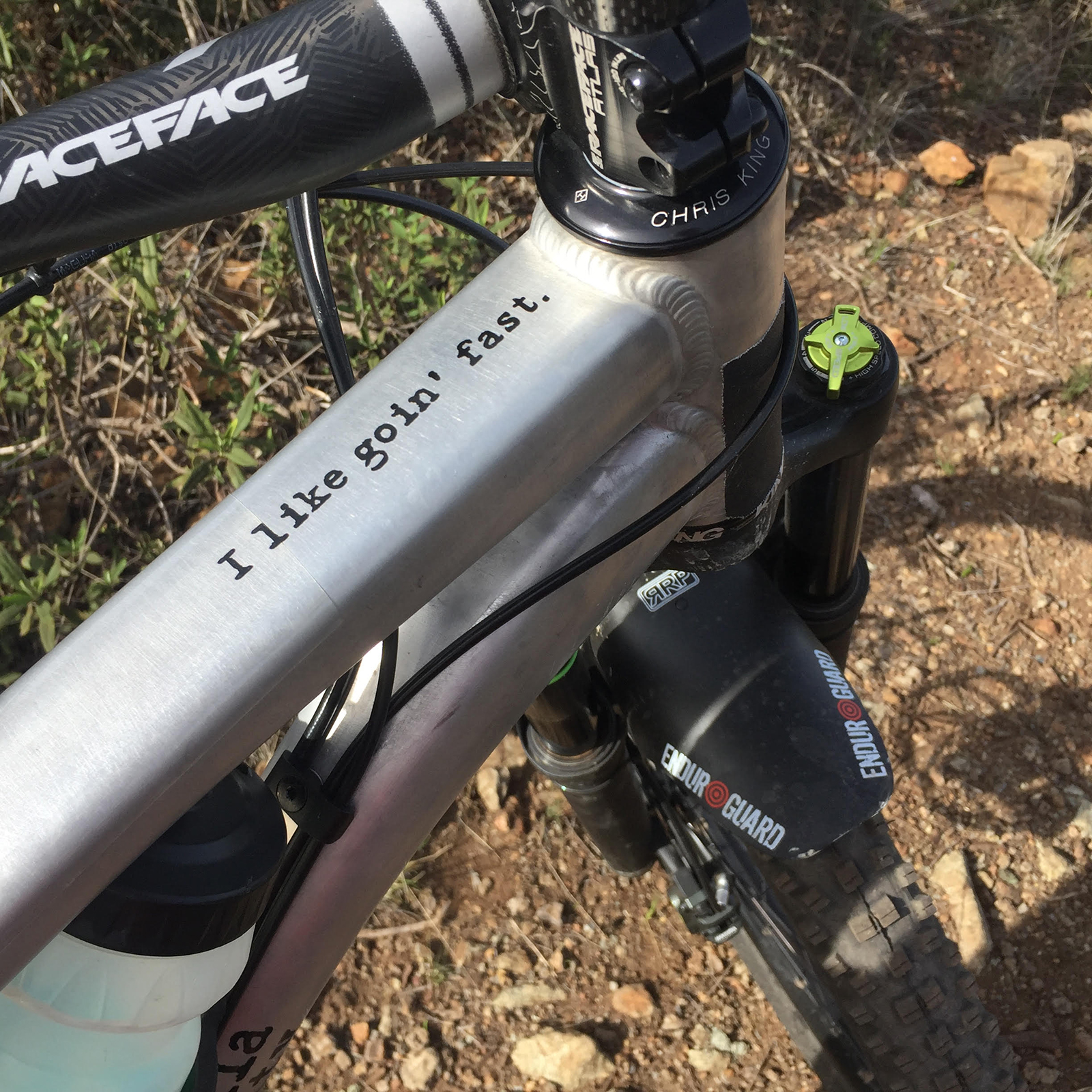 GG "I Like Going Fast"
GG "I Like Going Fast"
Guerrilla Gravity is at the forefront for Forward Geometry here in the USA. They have been doing it for almost 4 years now. During that time other companies have made their bikes longer as well. Look carefully at some of these companies and you will see their sea tube angles are pretty slack this is an easy way to get a longer reach number while the wheelbase stays the same length. GG is adamant about using steep seat post angles on all their bikes. This makes for a bike that doesn't dramatically change when a rider has a seat all the way up and then drops it down real fast. Also in many instances taller riders complain of knee pain while riding bikes with slacker seat angles. Another benefit of the steeper angle is keeping the front end down on steep climbs.
The ride the Smash offers is stiff! We couldn't detect any flex in the frame during hard cornering. Having such a rigid chassis will transmit a bit more trail into the handlebars than a more forgiving chassis but will also grant the rider with instant responses to their inputs. Another thing very much worth noting about the frame was their decision to use a threaded BB and a 1.5 steer tube. Thanks GG for making our bike assembly easier and also helping to keep it quite for a very long time. Looking at the bike and its use of large bearings, high grade hardware, and avoiding the latest in cycling standards it becomes apparent it was designed with the input of experienced mechanics.
Guerrilla Gravity has once again created another awesome shred machine. Their Homage to arguably one of the best rock bands in history with The Smash name is just icing on the cake. This doesn't feel as aggressive as The Megatrail did in gravity mode and this probably comes down to the ultra low BB the 650B bike had on it. I think the HA and WB length of The Smash are very good and comparing it to the other aggressive 29" enduro bikes we have tested in the past it does many things better. As we mentioned earlier The Smash is one hell of a pedal machine. While wide open the shock bobs very little and still provides a very active suspension. Putting the shock into pedal mode just eliminates almost any motion out of the frame while putting down power. If you run the frame in Crush mode it provides the rider with even more mid stroke support and gives a slightly firmer feel to the ride.
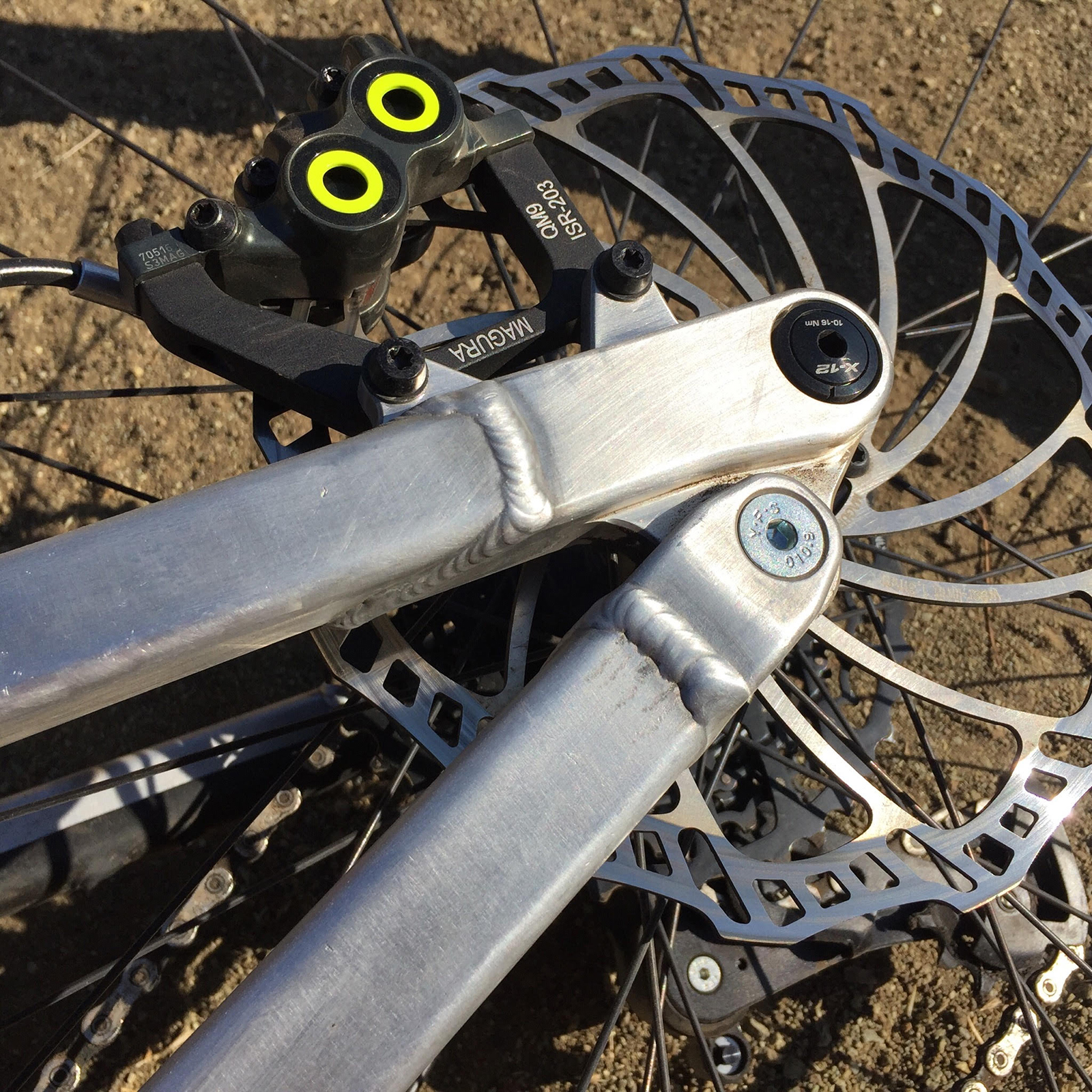 FSR? Freedom Linkage yo
FSR? Freedom Linkage yo
Climbing aboard The Smash was a relaxing experience. Just point the bike where you want to go and it will take you there with ease. Once you begin climbing steeper grades it will become apparent that the long wheelbase in conjunction with the steep seat post angle are doing their job of keeping the front wheel down and providing plenty of traction for the back wheel. Our bike was in the mid 32 pound range and could have been a bit lighter with different suspension and cockpit choices. This didn't take away from its ability to get the rider to the top of the hill. In fact this is the same weight as every other 29" bike we have tested so far.
We finished the bike while it was raining out. So naturally we took to the hills. There are two trails in our area that are fine to ride while still wet. The closest trail is also the shortest it climbs 700 feet in just over a mile. It is tight singletrack that is loose and rocky. This descent allows fast riders to break the 30 mph mark. Luckily for me I have never gone above 26mph on this trail. We had the bike in Crush mode this first time out and it provided plenty of traction and the suspension to handle anything on this trail. It quickly became apparent that the bike comes alive at higher speeds. It never felt twitchy or like it was being bucked around. Once I got to the bottom of the wet hill I was 10 seconds back from my fast time. That is pretty good considering I have not ridden in close to two months.
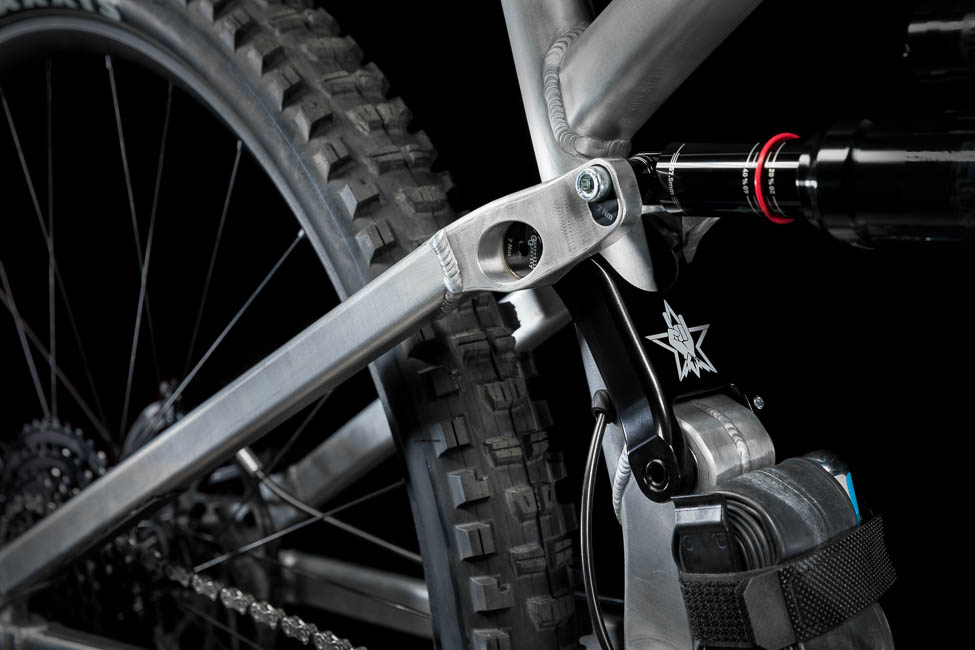 GG The Smash has NUTS
GG The Smash has NUTS
Across the valley from this first trail is another that is much longer and has way more turns in it. Also at the bottom of the trail you have to climb 100 or so feet out to finish it off. This gives a good idea of a bikes cornering ability and some idea of how it will handle g-out situations. At the very start of this trail is a hard left in rocky terrain. then it sends you through a short rock garden and then into a high speed off camber section. The Guerrilla Gravity Smash made fast work of the first corner and shot me into the rocks at a fast rate. Wagon wheels rolled over them without any issue. After you finish the high speed part the trail enters a section of turns and then sends you into an abrupt short uphill that acts as a g-out. The bike stuck well in the turns and I was reminded to keep some weight over the front tires to keep the traction. Overall The Smash showed it could tackle turns, rocks and high speed sections with ease. The climb out at end was a snap and I could taste the blood in my lungs at this point so I know I had a good go.
Another nearby trail is littered with zig zag corners for the first third of it. The corners are very sharp and it is obvious the trail was made this way to keep MTB speeds down. Many faster riders in the area despise this trail but will ride it on occasion. I try and get up here once a week. Turning is a weak part of my riding so spending time up here helps me with that. Considering I am riding a 29" bike with almost a 50" wheelbase tight sections should be The Smash's achilles heel. This turned out not be the case while riding The Smash on this twisty hill. All the corners have rocks scattered throughout them to test out a bikes suspension. I had one time where my back wheel made contact with the inner side of the turn. More than likely this was rider error and was a result of turning to early. I was able to get times within 10 seconds of my fastest after doing the trail 3 times.
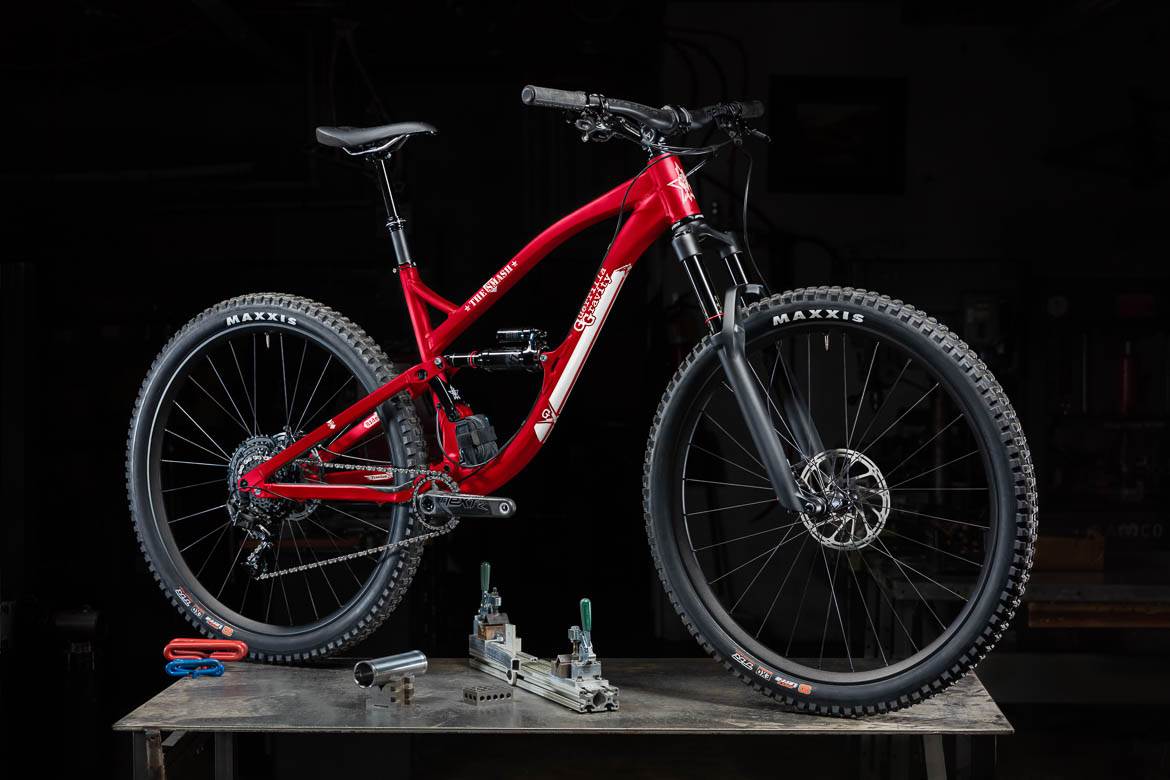 The Smash has new sticks and colors
The Smash has new sticks and colors
Conclusion
Once again Guerrilla Gravity delivered a very high quality product that was made in country and built with loving hands. Choosing to use a 1.5 head tube combined with a threaded BB helps the bike go together smooth and offers many options for the owner to choose from. Being able to see the work that goes into making a frame is something that is lost when looking over a plastic frame. We had a small issue when installing the dropper post cable into the frame. It got hung up while trying to press the post into the frame. We just had to press the housing into the seat tube so it would clear the cable hole and not get hung up. The frame offers a bunch of clearance for the rear tire. We where running a 2.3 rear tire and had plenty of space on both sides.
Overall the Smash is a confidence inspiring Enduro bike that is built and descends like a mini Downhill bike. This is a bike that can last for years of trail riding without issue. Having a bike that lasts more than a few seasons under serious riding is a rarity these days. If you are looking for a park capable 29" Enduro bike that you can ride just about anywhere that will stand the test of time and not hold you back in anyway the Smash is a bike you should take a serious look at. We would gladly recommend the Guerrilla Gravity Smash to a friend it has been a blast to ride and is probably gonna stay awhile. Another very noteworthy feature of Guerrilla Gravity bikes is their low price point. Having a USA made frame for around $2000 is a great value.
Guerrilla Gravity The Smash Gradecard
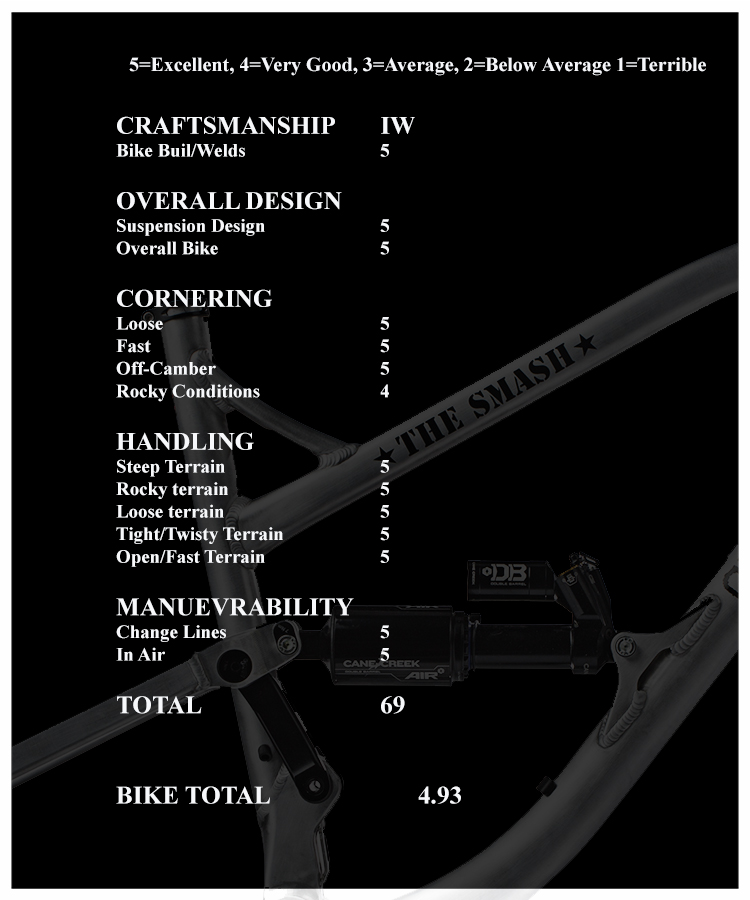 GG The Smash Scorecard
GG The Smash Scorecard
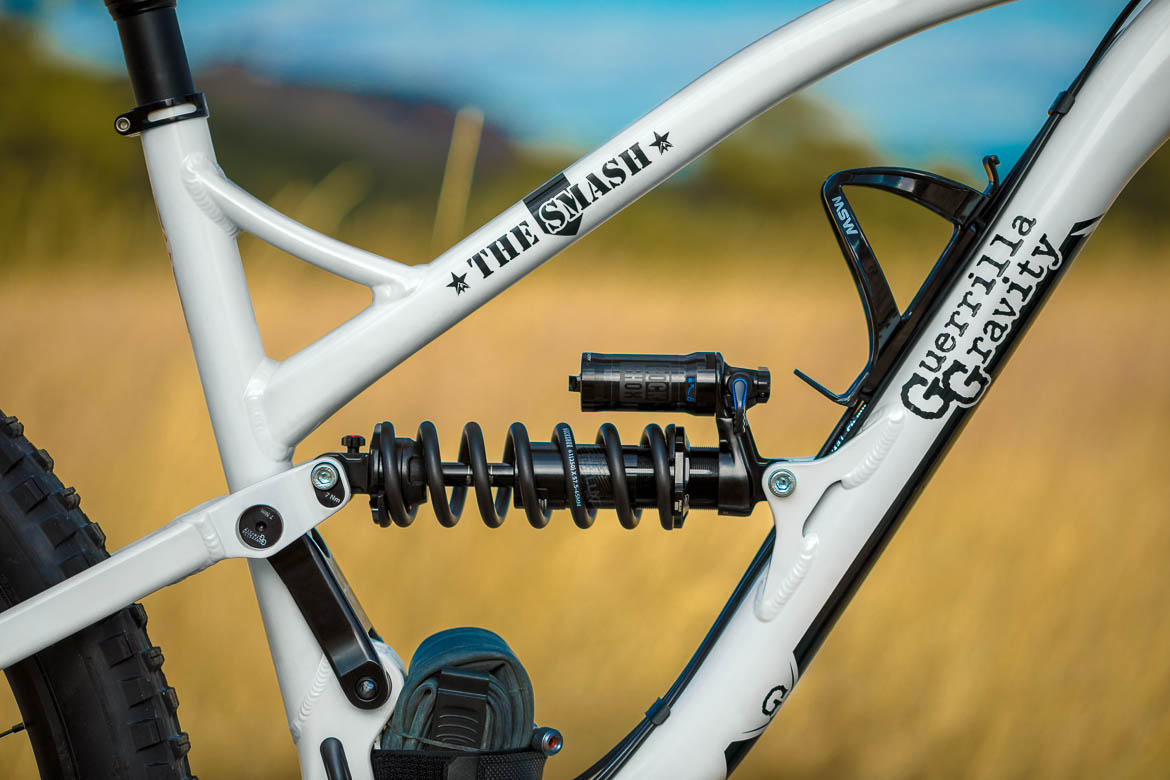 The Smash with coil shockGo check out the Guerrilla Gravity Smash
The Smash with coil shockGo check out the Guerrilla Gravity Smash
Guerrilla Gravity Q & A
3. Break down your team for us and what they do?
4. How did the idea for The Smash begin?
11. Any chance you guys can get the water bottle mounts down closer to the shock to clear a big bottle? Us fat old guys will love you for it.
12. Care to elaborate on Geometry used on the Smash?
Sometimes the “internet riders” seem to think our cockpit geometry is way too long, but literally every rider to throw a leg over aSmash feels comfortable instantly. By utilizing a roomier cockpit with a shorter stem you have a better, more stable center of balance and room to freely use body English. It’s also preferable for getting rowdy on the downhills, as your weight is more centered and not as far forward, over the bars.
13. Rocks or jumps?
 29",
29",  Colorado,
Colorado,  EWS,
EWS,  Enduro,
Enduro,  GG The Smash,
GG The Smash,  Guerrilla Gravity,
Guerrilla Gravity,  Guerrilla Gravity The Smash,
Guerrilla Gravity The Smash,  Wagon WHeels |
Wagon WHeels |





